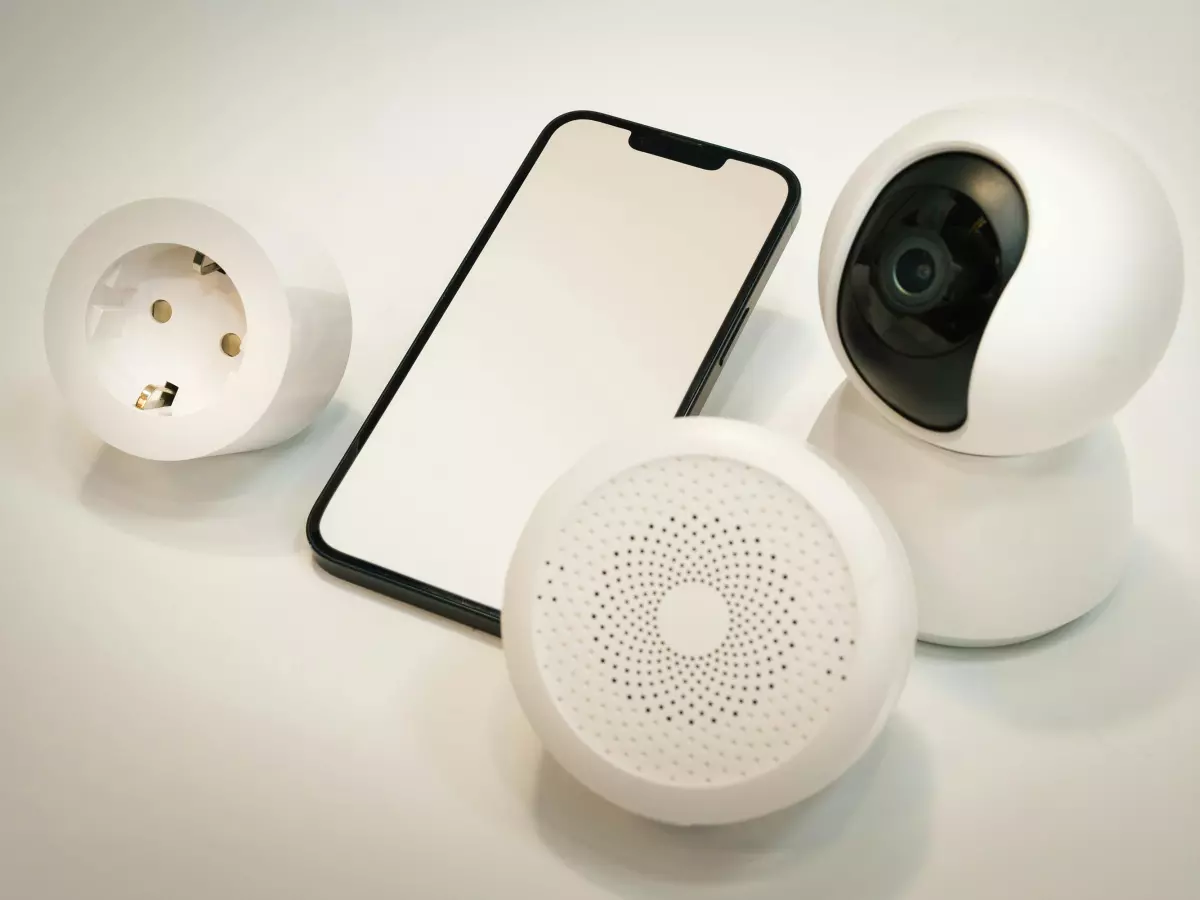Bandwidth Battle
Think your smart home devices are all getting along? Think again. There's a silent war happening right under your nose, and it's all about bandwidth. You might think that once you've installed your smart lights, security cameras, and voice assistants, they’ll work together in perfect harmony. But the truth is, they’re all fighting for the same thing: your internet bandwidth.

By Jason Patel
Here’s the common myth: “I have fast internet, so my smart home devices will work flawlessly.” It’s easy to believe that as long as you’ve got a solid internet connection, your smart home will run like a well-oiled machine. But the reality? Even with fast internet, your devices can still struggle to connect, lag, or even drop offline entirely. Why? Because they’re all competing for the same bandwidth, and not all devices play nice.
Let’s break it down. Every smart home device you add to your network takes up a slice of your available bandwidth. The more devices you have, the more slices get taken. And if you’ve got a lot of devices—say, smart lights, a thermostat, security cameras, a smart fridge, and a couple of voice assistants—that bandwidth pie starts to get eaten up pretty quickly. Suddenly, your once-fast internet feels sluggish, and your smart home starts to feel not-so-smart.
Understanding Bandwidth and Smart Devices
Bandwidth is essentially the amount of data that can be transmitted over your internet connection at any given time. Think of it like a highway. The more cars (or devices) you have on the road, the slower the traffic moves. And when you’ve got a lot of devices trying to send and receive data simultaneously, things can get congested.
Some devices are more bandwidth-hungry than others. For example, streaming a 4K security camera feed or having a video call on your smart display will take up a lot more bandwidth than turning on a smart light or adjusting your thermostat. But even those smaller tasks add up when you’ve got dozens of devices connected to your network.
Now, here’s where things get tricky. Not all smart home devices use the same protocols or connectivity standards. Some might use Wi-Fi, while others use Zigbee, Z-Wave, or even Bluetooth. Each of these protocols has its own impact on your network’s bandwidth. Wi-Fi devices, in particular, can be bandwidth hogs, especially if they’re constantly sending and receiving data (looking at you, smart cameras).
Protocols and Their Impact on Bandwidth
Let’s talk about the different protocols your smart home devices might use and how they affect your bandwidth:
- Wi-Fi: The most common protocol for smart home devices, but also the most bandwidth-intensive. Wi-Fi devices are constantly communicating with your router, and if you’ve got a lot of them, they can easily overwhelm your network.
- Zigbee: A low-power, low-bandwidth protocol that’s great for devices like smart lights and sensors. Zigbee devices form a mesh network, which helps reduce the load on your Wi-Fi network.
- Z-Wave: Similar to Zigbee, Z-Wave is also low-power and low-bandwidth. It’s commonly used for smart locks, sensors, and other low-data devices. Like Zigbee, Z-Wave devices form a mesh network, which helps distribute the load.
- Bluetooth: While not as common for smart home devices, Bluetooth is used for things like smart speakers and some smart locks. It’s low-bandwidth, but its range is limited, so it’s not ideal for larger homes.
Each of these protocols has its pros and cons, but the key takeaway is that Wi-Fi devices are the most likely to cause bandwidth issues. If you’ve got a lot of Wi-Fi devices on your network, you’re more likely to experience slowdowns and connectivity problems.
How to Manage Bandwidth in Your Smart Home
So, what can you do to keep your smart home from becoming a bandwidth battlefield? Here are a few tips:
- Prioritize your devices: Not all smart home devices need constant, high-speed internet access. For example, your smart lights don’t need the same priority as your security cameras. Use your router’s Quality of Service (QoS) settings to prioritize bandwidth for the devices that need it most.
- Use a mesh Wi-Fi system: If your home is large or you’ve got a lot of devices, a traditional router might not be enough. A mesh Wi-Fi system can help distribute your internet connection more evenly across your home, reducing congestion and improving connectivity.
- Limit the number of Wi-Fi devices: Whenever possible, choose smart home devices that use Zigbee, Z-Wave, or other low-bandwidth protocols. This will help reduce the load on your Wi-Fi network and free up bandwidth for the devices that really need it.
- Upgrade your internet plan: If you’ve got a lot of smart home devices and you’re constantly running into bandwidth issues, it might be time to upgrade to a faster internet plan. Look for plans with higher upload and download speeds to accommodate all your devices.
- Monitor your network: Use a network monitoring tool to keep an eye on your bandwidth usage. This will help you identify which devices are using the most bandwidth and make adjustments as needed.
The Future of Smart Home Bandwidth
As smart homes become more common, the demand for bandwidth will only increase. In the future, we may see new protocols and technologies designed specifically to address the bandwidth needs of smart homes. For example, Wi-Fi 6 and 6E are already starting to roll out, offering faster speeds and better performance for homes with lots of connected devices.
But for now, managing your smart home’s bandwidth is all about balance. By prioritizing your devices, using the right protocols, and keeping an eye on your network, you can keep your smart home running smoothly without running into bandwidth bottlenecks.
So, the next time you’re adding a new smart gadget to your home, remember: it’s not just about having fast internet. It’s about making sure all your devices can share that bandwidth without stepping on each other’s toes.
Conclusion: Keep the Peace
At the end of the day, your smart home doesn’t have to be a battlefield. With the right strategies in place, you can keep your devices from fighting over bandwidth and ensure that everything runs smoothly. Prioritize your devices, use low-bandwidth protocols where possible, and consider upgrading your internet plan if necessary. By doing so, you’ll keep the peace in your smart home and enjoy a seamless, connected experience.





